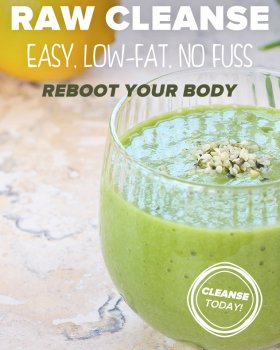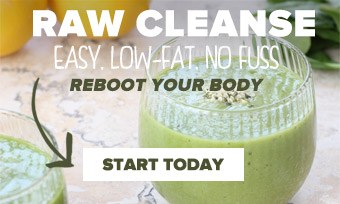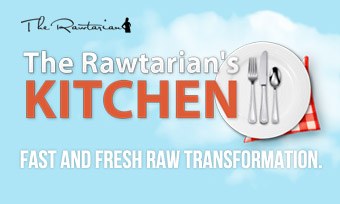Besides the regular raw goodies that you should have in your pantry (like celtic sea salt, dates, etc.), now is a good time to take a look at this list and pick up these 10 ingredients that you’ll need for dehydrating.
Don’t forget to read the detailed notes below, because they offer insight into the basics of making raw food dehydrator recipes.
| Purpose/Function | Ingredient |
|---|---|
| Binding agent | Whole flax seeds |
| Binding agent | Ground flax seed (also called flax seed meal) |
| Binding agent | chia seeds |
| Basic substance | Hemp hearts (also called hempseed hearts) |
| Basic substance | Almonds |
| Basic substance | Cashews |
| Basic substance | Kale |
| Flavor enhancer | Onion powder |
| Flavor enhancer | Nutritional yeast |
| Flavor enhancer | Sweetener |
| Fat | Coconut oil |
| Fat | Extra virgin olive oil |
Binding agents and texturizers
This category of ingredients is the most important. They are the binding agents. In other words, these are the ingredients that keep your recipe sticking together. If you forget to add a binding agent to a recipe, the recipe will likely crumble and fall apart once you take it out of the dehydrator.
Whole flax seeds
Generally, it doesn’t matter what color flax seed you use. If a recipe calls for “golden” flax seeds but you only have “brown” flax seeds then don’t sweat it. All colors of flax seed are interchangeable. Usually the only reason to specify a specific color is for appearance. Generally, flax seeds are very easy to find and your grocery store may even carry them. If not, check your local bulk food retailer or health food store. Flax seeds store very well. I keep mine in a glass jar; ideally, store in an airtight jar in the refrigerator (although you can leave them in your dry pantry if your fridge is full). Flax seeds have a very distinct taste, and they get stuck in your gums!
Ground flax seeds
Also known as "flax seed meal." Ground flax seeds are simply whole flax seeds that have been ground into a flour-like substance. You can certainly grind your own flax seeds at home using a dedicated coffee grinder. However, it’s easiest to buy pre-ground flax seeds. That way you don’t have to worry about grinding them yourself. Buy wherever you buy your whole flax seeds. Store your ground flax the same way you would store regular flour.
Chia seeds
Chia seeds are raw food’s answer to tapioca pearls. They are little black seeds that grow up to ten times their size when wet! They are excellent and integral for making recipes gelatinous or smooth. My local bulk food retailer carries them; however, they are more difficult to find than flax seeds. Usually a package of chia seeds will last for quite a while because most recipes only call for a small amount of chia seeds.
Basic substance
A lot of recipes use these nuts and seeds as the bulk of their substance. Try to keep these on hand at all times.
Hemp hearts
Hemp hearts are the interior of hemp seeds. They are quite oily and fatty (although they are dry to the touch), which can be a good thing depending on your recipe! Similar to avocado, the addition of hemp hearts can make your recipe much creamier. They are quite expensive, though, so use sparingly. Store tightly sealed in your refrigerator, if possible. I love to use hemp seeds in my veggie burger recipes; they provide an important moist texture and “flavor profile” as the cooking show gurus say.
Almonds
Almonds are harder to break down, but they are very versatile and are used in a lot of dehydrated recipes. I keep a huge container of almonds in my kitchen at all times. I never let myself run out.
Cashews
Similar to almonds, cashews are also a common ingredient in dehydrator recipes. I also keep a large bag of cashews on hand for when the mood strikes! Cashews provide an extremely nice smooth and creamy texture when they are blended and/or processed. Frequently, if I want to make a white cookie or white dessert that is similar to something I would have used flour in from my old “Standard American diet” life, I will grind cashews into a “cashew flour” using my food processor.
Kale
You will notice that kale is commonly used to make chips! Kale is a great leafy green vegetable. It’s super good for you and it dries up very nicely in the dehydrator. It also keeps really well in the fridge before you dehydrate it. Best of all when you dehydrate it, it loses its naturally bitter flavor and absorbs whatever flavors you load it up with… Just like chips!
Do not substitute anything else for kale when trying to make kale chips. Nothing else will do (spinach or lettuce will not work — yuck!)!
Note: once they are dehydrated, kale chips become very fragile. Also, they won’t stay dry for very long, so consume immediately or else they will get a bit rubbery (rubbery=gross) if you leave them out for a day or so.
The ideal drying time for kale chips is about 24 hours.
Flavor enhancers
These make recipes taste good, silly!
Onion powder
Onion powder is an awesome spice. I use it when I want to recreate a real junk-food style taste, especially when making kale chips. Depending on the recipe, you can substitute fresh onion instead of onion powder; however, the flavors are quite different. I really enjoy the flavor of onion powder, because it resembles the flavors that I was used to when eating standard American diet potato chips and crackers. I always keep a nice supply of onion powder on hand. (Please note: onion powder is different from onion salt. I am talking about onion powder, not onion salt.)
Nutritional yeast
Nutritional yeast is not technically “raw”, but it is used in a wide variety of raw food recipes to provide a cheese-like flavor. I don’t actually like the taste of nutritional yeast on its own–so I never sprinkle it on anything. Rather, I use it within recipes. It’s best to use nutritional yeast flakes. Nutritional yeast should be kept in a tightly sealed container. It’s best to buy in small batches because it can lose flavor over time. I discard my nutritional yeast if it’s been on my shelf for four months or so. I tend to buy approximately 2 cups of nutritional yeast at a time. I buy my nutritional yeast at my local bulk food retailer.
A sweetener
Although honey isn’t vegan, I include it in my raw lifestyle because I can buy it from local farmers and I’d rather support my local community than use imported sweeteners, like agave nectar. However, it’s important for you to understand that honey does not dehydrate! So do not use honey as your sweetener when dehydrating. I use agave nectar, maple syrup or dates as my sweeteners. (You can also use powdered stevia, but I do not like the taste so I do not use it.)
The Fats
Mmm, richness of flavors often comes from fats. Be careful not to add too much fat though, because fat doesn’t really dehydrate so if your moisture is all from fats then you will have a hard time getting your recipes to dry out.
Coconut oil
Coconut oil is awesome and is a must-have in your dehydrator pantry! It’s also chockfull of fat, so you don’t want to gorge on recipes with a lot of coconut oil 24/7. However, some fat is important in your diet so it’s a wonderful ingredient to use. Coconut oil adds a wonderful texture to your recipes–I would call it a substitute for butter. It adds a depth and full-flavoredness to recipes that is hard to replicate. Coconut oil hardens (turns white and gets hard) when it goes below room temperature, but it will liquefy again when the room temperature increases. You can use it either way. Some people prefer to warm it up slightly (soak jar in bowl of warm water) so that it will liquefy, but I usually just use it however it is, and I am just certain to ensure that it’s well mixed into the recipe–again, similar to using butter. Store in your pantry.
Extra virgin olive oil
Always keep some of this in your pantry. It’s olive oil! Not much more to say about that. I presume that you are familiar with it. Store in your pantry, ideally in a dark place. Some people refer to it as EVOO.
FREE Raw Recipe Package
Subscribe to newsletter below. Get the 11 Best Raw Recipes (PDF E-Book Package) instantly.
The Rawtarian Recipes
Latest Certifications
-

kami_kev_5
Low-Fat Raw CleanseAugust 22, 2019 -

theartluva
Low-Fat Raw CleanseMay 22, 2019 -

marial4366
Raw Baby Steps ProgramMay 12, 2019 -

Mona
7-Day Raw Summer ChallengeJuly 5, 2018

















































What's Being Talked About